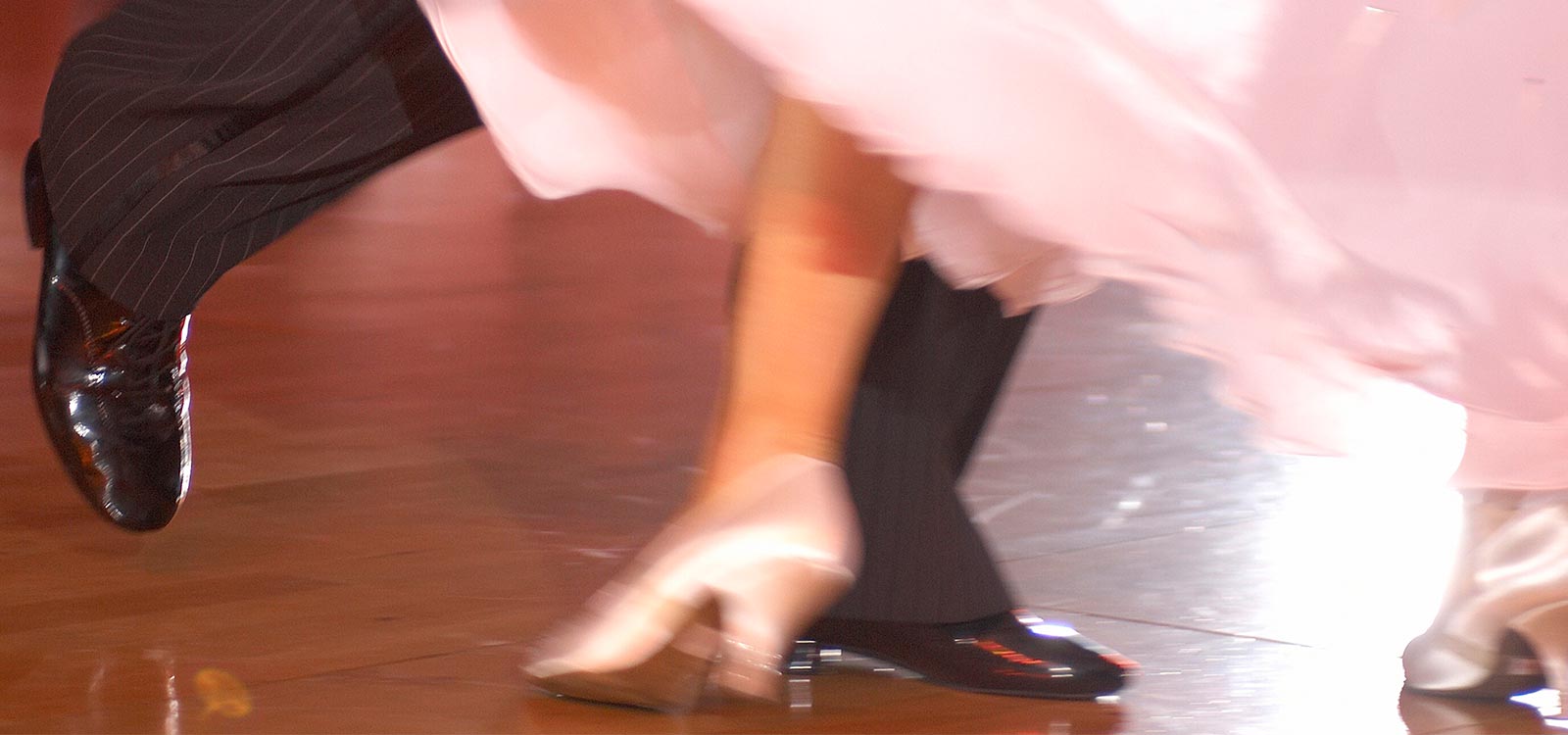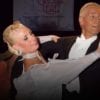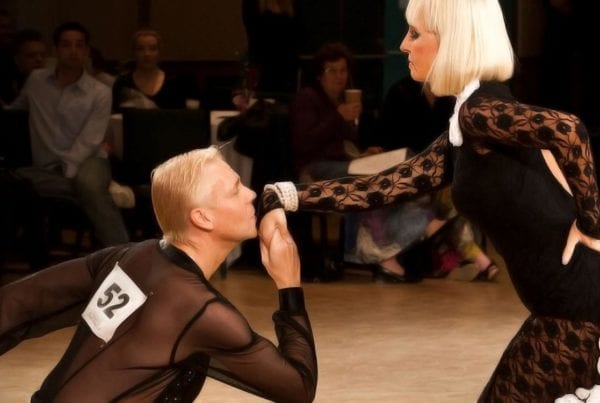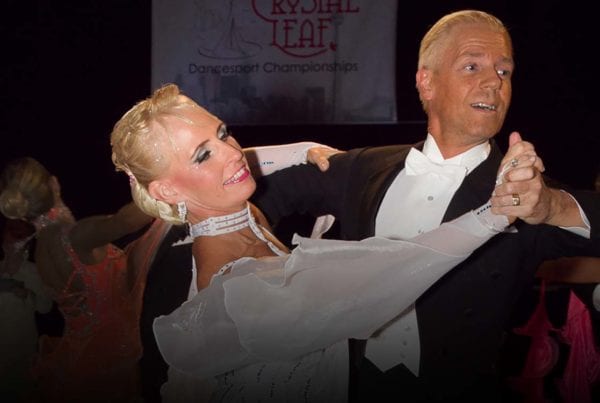Leading or following in ballroom dancing is equally challenging on both sides of the partnership. Let’s face it, if this was easy, everyone would be a champion. Too often what we do in an effort to “help” our partner actually works against us. The Turning Lock to Right in Waltz is a basic step with some unique issues that deserves a closer look.
The Waltz Turning Lock to Right begins with an overturned Spin Turn, then continues rotating to the right with a locking action before transitioning to Promenade Position for the final step.
The Spin Turn itself, though a Bronze figure, is not an easy one. Thus, creating an overturned version takes even more skill. For one thing, there is no time for the lady to perform the usual brushing action of her right foot. Instead, she steps straight through onto the toe of her right foot.
The problems with this figure often begin right here, with the Spin Turn itself.
The Lead has to understand that in the pivot of the Spin Turn his partner needs to make it all the way from one side of him to the other. If he takes a large step backward with his left foot, or moves his body in the process, the lady can never be expected to make it around him. It’s important that he turns his left foot inwards as he places it back, not too diagonal but with just enough space for her to place her foot, and without taking his body away from her. As he pivots, she steps forward to begin her pivot action. If she fails to power that initial step she will end up beside him. It is also important that she keeps her head very left and outside the circumference of the rotation to allow centrifugal force to do its magic.
As soon as the Spin Turn is complete the Turning Lock to Right begins and this is where it often goes terribly wrong.
The Turning Lock to Right
The figure itself begins with the man stepping back with his right foot as the lady steps forward with her left, beginning to turn right. Then the man’s left foot is placed loosely in front of his right foot and the lady places her right foot loosely behind the left as she continues to turn. Finally, she places her left foot to the side and slightly back as he places his right foot to the side and slightly forward in between her feet before the couple opens from Closed Position to Promenade Position. Note that her third step is “slightly back,” not forward. This is because she has already turned as she steps around him. Yet too often the lady is forced to step forward with her left foot because of what the man is doing and this creates a host of problems.
Three things are most commonly involved in causing problems with this figure.
The first is that the man tries to “pull” the lady past him, turning his upper body too soon to the right. As she is pulled in that direction, the lady is forced to extend her upper body forward ahead of her feet, essentially making it impossible for her to arrive where he is so desperately trying to place her. Not only that, but she is unable to complete her turn to step slightly back on the final step because he has pulled her forward. The man thinks he is helping her by using his upper body to direct her, but he is actually impeding her ability to get there!
Want more Waltz technique? Learn how to dance a more conversational Waltz.
The most common problem with the Turning Lock to Right is that the man tries to pull the lady past him by turning his body too soon
The second problem is that the Lead thinks of the figure as a strong lateral action. It is absolutely true that this figure moves down the Line of Dance, so in that sense it is certainly a lateral figure rather than rotational. But by thinking of it this way, the man will use his energy to place the lady past him down the LOD, causing her left foot to be placed forward, away from him, rather than side and slightly back around him. In this way, she now finds herself in front of his body when he attempts to move from Closed to Promenade Position. As the lead, understand that her left foot following the lock needs to be placed side and slightly back, so that when opening to Promenade Position she remains behind the man’s hip.
And that brings us to the third common issue with leading this figure. Even when the man waits to begin his body turn to the right, and even when he directs her to place her left foot around his right foot, he often impedes her by placing his right foot too quickly into position. Note that the proper technique is for the man to place his foot between the lady’s feet. This is only possible if she has already placed her left foot. To create a smooth transition to PP, the man must enable the lady to place her foot first, then he places his right foot between her feet. If he did his job well up to that point, her left foot should be exactly where he wanted it as he completes his weight transfer. It’s a very subtle difference that makes a huge difference in the efficiency and beauty of this figure. As the Lead, make sure that you move your hip and leg out of the way so that the lady can take her step, but don’t commit your own foot to the step until you feel that she has placed her left foot.
As you can see, there are many details to the Turning Lock to Right that are often misunderstood or never understood at all, causing the figure to fall apart. With attention to the precision of this figure you can make it a beautiful part of your choreography.











